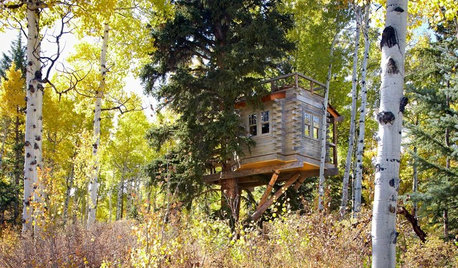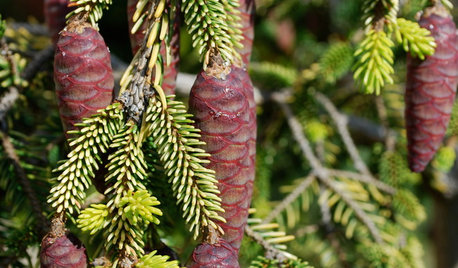spruce growing from a tree trunk
PurpleBlueGold
9 years ago
Related Stories

GARDENING GUIDESGrow Your Own Privacy: How to Screen With Plants and Trees
Use living walls to lower your home and garden's exposure while boosting natural beauty in your landscape
Full Story
EDIBLE GARDENSHow to Grow 10 Favorite Fruit Trees at Home
Plant a mini orchard in fall, winter or early spring to enjoy fresh-off-the-tree fruit the following year
Full Story
TREE HOUSESSwaying From Sleepovers to Dinner Parties in a Colorado Tree House
Folks of all ages have it made in the shade in this fun little house, thanks to electricity, a kitchenette and a rooftop deck
Full Story
FRUIT TREESHow to Grow Your Own Juicy Plums
Easier than other stone fruits and with a variety of colors to choose from, plums are a versatile garden addition
Full Story
EDIBLE GARDENSSummer Crops: How to Grow Tomatoes
Plant tomato seedlings in spring for one of the best tastes of summer, fresh from your backyard
Full Story
FRUIT TREESHow to Grow Your Own Persimmons
Sturdy and easy to care for, these trees offer bright fruit through winter — and keeping them in bounds is no sweat
Full Story
EDIBLE GARDENSWhy Grow Quince? For Beauty, Fragrance and Old-Time Flavor
Delightfully perfumed fruit and lovely spring blossoms make this apple and pear cousin worth a spot in the garden
Full Story
EDIBLE GARDENSGrow Plum Hybrids for Your Favorite Fruit Flavors
Plums are cozying up with apricots, peaches and even cherries — here’s how to grow these hybrids for the best aspects of each
Full Story
EDIBLE GARDENSHow to Grow Your Own European and Asian Pears
Try these trees for their good looks, delicious fruit and wide range of sizes — plus you can espalier them
Full Story
GARDENING GUIDESGreat Design Plant: Skylands Oriental Spruce, a Favorite Conifer
Brighten up a drab corner of your garden with Picea orientalis ‘Skylands’, a smaller spruce that a bird family might just call home
Full Story








ken_adrian Adrian MI cold Z5
Embothrium
Related Professionals
Edmond Landscape Architects & Landscape Designers · Harrison Landscape Architects & Landscape Designers · Rossville Landscape Architects & Landscape Designers · Saint Charles Landscape Architects & Landscape Designers · Vernon Hills Landscape Architects & Landscape Designers · Washington Landscape Architects & Landscape Designers · Allentown Landscape Contractors · Firestone Landscape Contractors · Gresham Landscape Contractors · Haverhill Landscape Contractors · Lewisville Landscape Contractors · Placerville Landscape Contractors · Pleasanton Landscape Contractors · Winchester Landscape Contractors · Woodburn Landscape Contractorswisconsitom
tsugajunkie z5 SE WI ♱
Embothrium
bengz6westmd
Embothrium
wisconsitom
Embothrium
wisconsitom
conifer50
wisconsitom
conifer50
wisconsitom
Embothrium
bengz6westmd
wisconsitom
redspruce
wisconsitom
redspruce
wisconsitom
mikebotann
wisconsitom
mikebotann
maple_grove_gw
wisconsitom